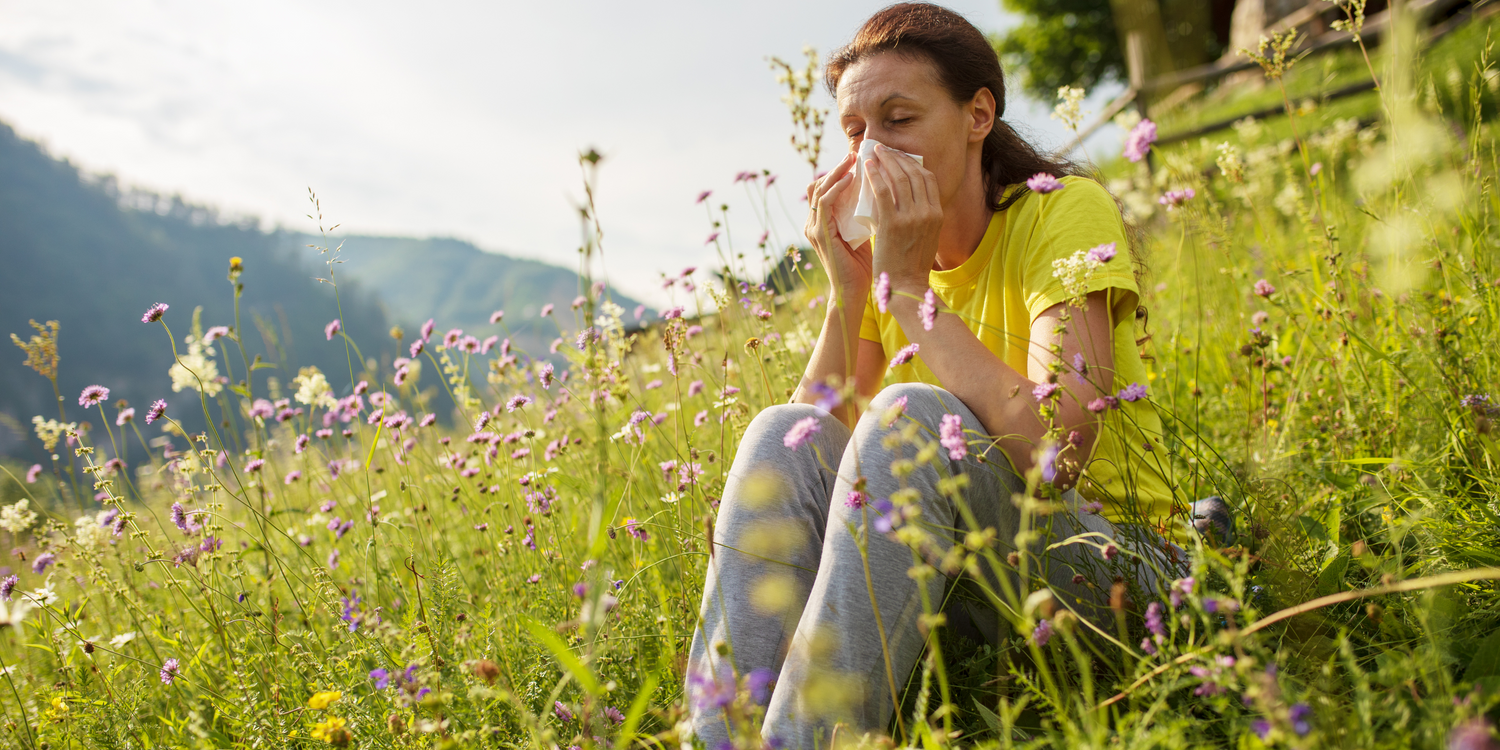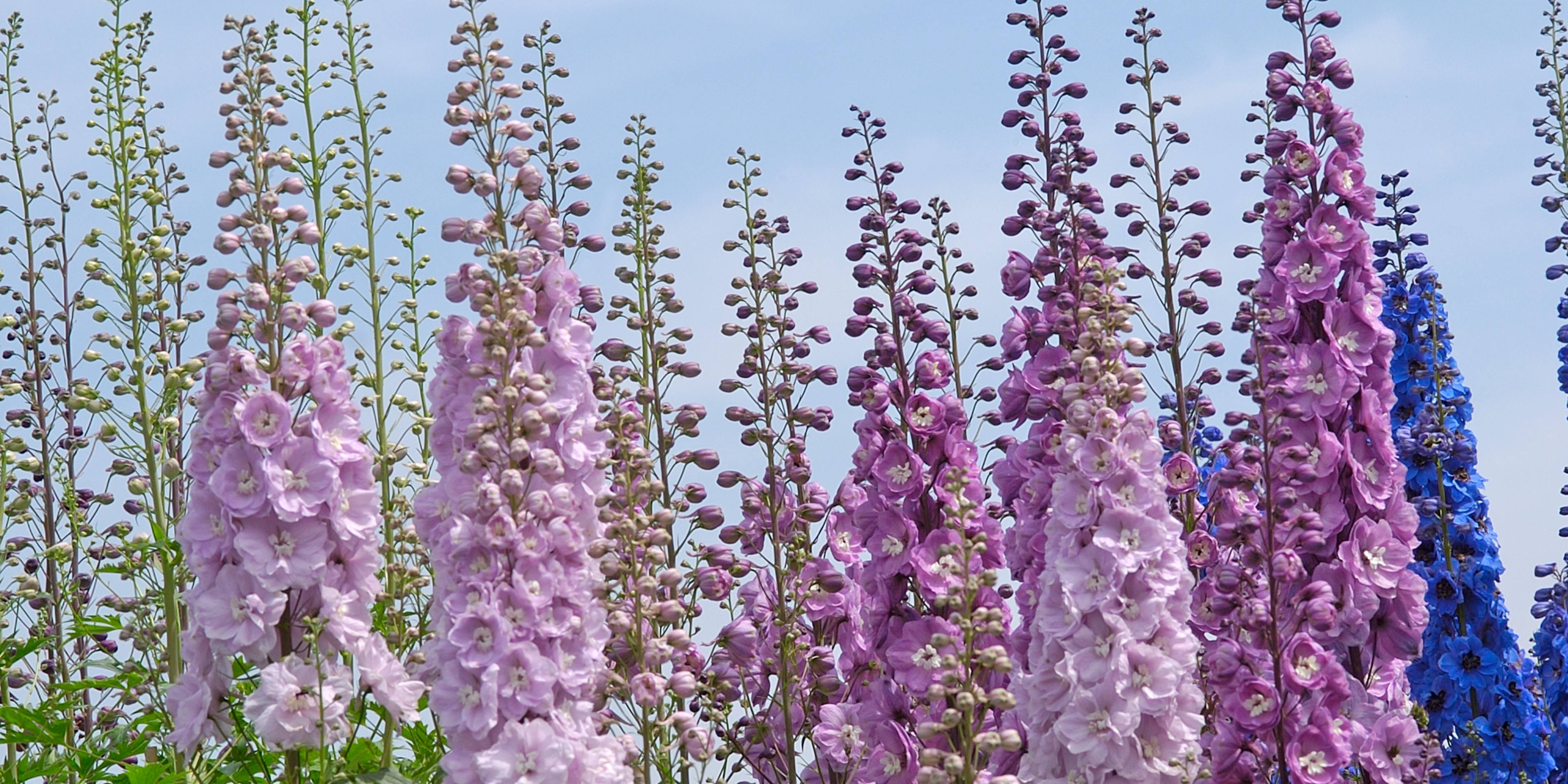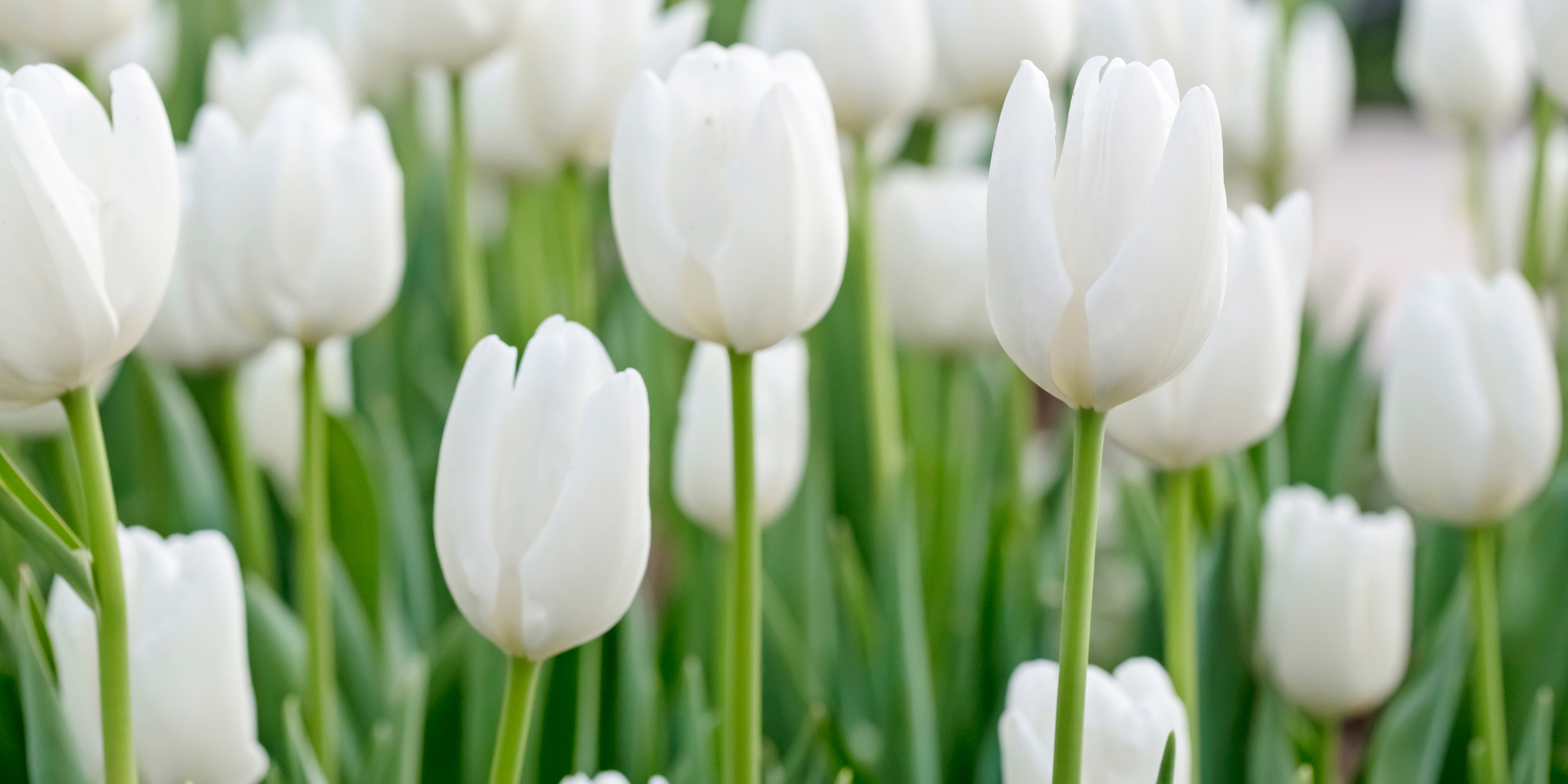Oh, springtime. It represents the return of the sun, the return of warmer days, the return of colour to our gardens and, to some, the return of relentlessly itchy eyes and constant sneezing.
Ahh yes, springtime is allergy season.
If you’re thinking of sending flowers to someone you love, it’s important to know which flowers are good and bad for allergies. And while spring is definitely peak pollen time, this applies to any time of year.
Read on to find out which are the best and worst flowers for those with allergies and hay fever.

What causes people to be allergic to flowers?
Before we take a look at the best flowers for allergies, we should consider why flowers can trigger allergies in some people.
The most common cause of flower allergies is pollen. According to the Australasian Society of Clinical Immunology and Allergy, some 18% of people in Australia and New Zealand suffer from pollen allergies.
Inhaling pollen can trigger what’s known as allergic rhinitis, more commonly called hay fever. Symptoms include itchy, watery eyes; itchy ears and throat; a runny, congested nose and sneezing.
In truth, the biggest culprits of hay fever are pollen from trees and grasses, rather than pollen from flowers. But that doesn’t mean flowers can’t cause an allergic reaction.
Sometimes the sap of certain flowers and even the tiny, fine hairs on their leaves and stems can cause contact dermatitis, another kind of allergic reaction.
The best flowers for allergy sufferers
The good news is that there are many beautiful blooms that people with spring allergies or asthma can safely enjoy. These include:

Roses
The world’s most popular cut flower is also one of the best flowers for those with hay fever. Roses are self-pollinating, and although they do produce pollen it doesn’t typically become airborne.
While most roses used in floristry have been bred to no longer carry a scent, some rose varieties are still quite fragrant. Garden roses and wild roses may cause negative reactions in those who suffer from fragrance sensitivities.

Tulips
These elegant blooms are a member of the lily family. The little pollen they produce is too heavy to become airborne and their stamens can be easily removed, so tulips are considered a safe choice for those with allergies.

Carnations
Colourful carnations are not known to trigger allergies. What they are known for is being one of the longest-lasting cut flower varieties. Not only will your loved one not have an allergic reaction to carnations, they’ll also be able to enjoy their beauty for a long time!

Daffodils
These bright and cheery blooms are among the first to flower at the end of winter. While the start of spring usually heralds the start of hay fever season, daffodils are not usually to blame.
Daffodils don’t produce much pollen and are pollinated by insects rather than by wind. So long as your recipient avoids getting too up close and personal with these flowers (that means no taking a sniff), they’re likely to be fine.

Peonies
With their short season and incomparable beauty, peonies have developed a cult following the world over. Their pollen is sticky and heavy and, like daffodils, they’re pollinated by insects rather than by wind.
As with daffodils, your recipient shouldn’t let their nose get too close to these flowers. So long as they avoid taking a big whiff and accidentally inhaling the pollen, they’ll likely not have any allergic reaction to peonies.

Gladioli
These tall, sword-like blooms add lots of drama and personality to any bouquet they’re featured in. Thankfully, gladiolus flowers are also very low risk when it comes to hay fever and flower allergies.

Snapdragons
Tall and colourful, the unique shape of snapdragon flowers helps keep their pollen trapped inside their petals, making them ideal for those with allergies.

Irises
Similarly to snapdragons, the unique shape of iris flowers helps them keep pollen trapped inside their long petals, which prevents it from wreaking havoc upon an unsuspecting allergy sufferer.

Orchids
Orchids are often regarded as being among the most allergy-friendly flowers you can get. Though they do contain pollen, it’s not the type to often trigger allergies.
However, some unlucky people may have an allergic reaction to orchid sap. Contact with orchid sap may trigger a rash and itchiness, but this usually goes away within a few days.

Zinnias
Despite belonging to the Asteraceae family, which contains some of the worst flowers for allergy sufferers (we’ll talk about them a bit later on), zinnias are considered relatively allergy safe.
If you’re sending flowers to a daisy-lover who suffers from hayfever, consider sending them zinnias instead.

Australian natives
Large Australian native flowers like banksias, bottlebrushes and grevilleas attract birds and bees with their sweet, rich nectar rather than with pollen. This means Australian natives are a perfect flower choice for those with hay fever and asthma.
The same can be said for non-Australian natives, such as pincushions and proteas.
The worst flowers for allergy sufferers
Among the worst flowers for allergy sufferers are those belonging to the Asteraceae family, which are pollinated by the wind. These include:

Asters & Daisies
Star-shaped asters, which are the birth flower of September, are one of the worst flowers for hay fever sufferers. Their similar-looking cousins, daisies, are not much better.
These little blooms grow in high numbers in fields and gardens and produce a lot of pollen, which can become airborne. This is great for attracting bees and butterflies, but not so great if you have allergies.

Chrysanthemums
These colourful flowers are available virtually all year round. They’re popular in floristry because they add a lot of colour and volume to bouquets. They do, however, produce a lot of pollen, which can trigger allergic reactions in some people.
Chrysanthemums can also cause contact dermatitis, an irritation of the skin often suffered by florists and horticulturalists who frequently handle these blooms.

Dahlias
These oh-so popular summertime blooms extend allergy season well into the warmer months.

Gerberas
A type of daisy, gerberas can be found in all sorts of bright, happy colours, making them a popular addition to get well soon bouquets and birthday bouquets.
Unfortunately, like their smaller daisy cousins, they also contain a lot of pollen so are best avoided if your recipient suffers from hay fever.

Sunflowers
Just by looking at their huge central disk, you can tell sunflowers are big pollen producers. Although you probably won’t instinctively go to take a big whiff of sunflowers as you might with more fragrant blooms, such as roses, it’s better to be safe than sorry and avoid them if you or someone you know suffers from pollen allergies.
Other allergenic flowers
Flowers from the aster family are not the only ones to trigger springtime allergies. Other flowers known for triggering symptoms of hay fever include:

Baby’s Breath
There are dozens of small, white blooms on a single stem of baby’s breath, which produce a lot of pollen to attract bees and butterflies.
Dainty and delicate, baby’s breath is a popular flower choice for wedding bouquets and baby shower flowers, so make sure you bring an antihistamine if you’re attending one of these events, just in case!

English Lavender
Many people have reactions to the pollen of English lavender and also to its strong scent. Blooming in clusters with lots and lots of small flowers, English lavender can be one of the worst flowers for allergy sufferers.

Lilies
Lilies are a little bit up in the air. As with tulips, lilies pack a lot of pollen, but this pollen is quite heavy and doesn’t typically become airborne. Plus, the stamens which carry the pollen can be easily removed.
If you’re sending flowers to someone who suffers terribly from spring allergies, it may be best to err on the side of caution when it comes to lilies. However, if they’re just prone to the occasional sniffle, lilies are likely a safe bet.
Remember as well that lilies are highly toxic to cats, so always keep this in mind when sending lilies to someone.

Flowers and fragrance sensitivities
Some unlucky individuals suffer from fragrance sensitivities, which means they often have to avoid scented candles, body lotions, deodorants, room diffusers, cleaning products and anything else with a strong perfume.
While fragrances are an irritant rather than an allergen, they can still produce allergy-like symptoms. These include headaches, wheezing, runny nose and sneezing, as well as rashes and itching.
Certain flowers can be incredibly fragrant, which most people love. How often have you picked up a bouquet and brought it straight to your nose to take a deep whiff of those beautiful blooms? For those with fragrance sensitivities, this can be just about the worst possible thing you can do!
Here are some of the flowers to avoid if you live with or are considering sending flowers to someone who’s highly sensitive to strong fragrances:
- Freesias
- Jasmine
- Lilac
- Stargazer lilies
- Oriental lilies
- Gardenias
- Brunfelsia
- Garden roses
- Frangipani
- Lily of the Valley
- Hyacinth
- Paperwhites
- Sweetpeas
Additionally, you should avoid sending the above flowers to a hospital or to someone who’s been unwell. Even if they don’t suffer from fragrance sensitivities, powerful scents can cause people who are already sick to feel even worse. Some hospitals may not even accept bouquets that are overly fragrant.

Some of the best fragrance-free or very lightly fragranced flowers are:
- Ranunculi
- Tulips
- Poppies
- Calla lilies
- Sunflowers
- Dahlias
- Hydrangeas
- Gladioli
- Irises
- Snapdragons
- Delphiniums
Send allergy-friendly flowers with Floraly
At Floraly, we want to make it as easy as possible for you to send joy to those you care about most. Allergies, asthma and fragrance sensitivities shouldn’t prevent our loved ones from enjoying the gift and beauty of flowers.
We understand it can be difficult to find flowers that are safe for friends and family with allergies. So if you’re interested in sending one of our bouquets but are worried about the flowers possibly causing an allergic reaction, reach out to our friendly Customer Care team. We may be able to make allergy-safe flower substitutions to give you peace of mind and keep your loved one safe.



